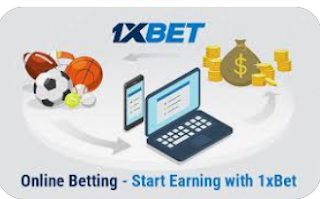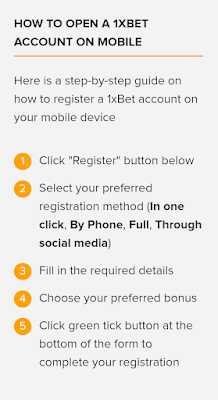If you’re just starting out, take a look at our guide to creating a YouTube channel. You should have the basics of your channel in place before you dive into the tips below.
1. Ask your viewers to subscribe
It doesn’t get much easier than this.
Sometimes your audience just needs to be reminded.
Does asking for the subscribe seem too salesy to you? It can be, if you ask too soon or too often. But a quick reminder to subscribe at the end of your video is just making it easier for fans to keep up with the work you do.
Remember to demonstrate why your channel is worth subscribing to. Make sure you ask for the subscription only after you’ve provided new and useful information, or you’ve made viewers laugh.
2. End your video by teasing what you’re working on next
Subscribing to a channel on YouTube is an act of anticipation. Viewers who’ve just seen what your brand is about are primed to want more if you’ve done your job right.
Hyping your next video, and making it clear why it’s not to be missed, is the most organic way to encourage people to tap subscribe.
Of course, this requires having a good handle on your YouTube content schedule, and knowing what’s coming next. (More on that soon.)
3. Verify your Google account
By default, all YouTube users can upload videos up to 15 minutes long. If you want to create content longer than that, you’ll need to verify your account.
Since longer videos give you more options for the kinds of content you can create, this is an important step for anyone who wants to build a professional channel.
To verify your account, go to www.youtube.com/verify on your computer (not a mobile device), and follow the instructions.
Once you verify your account, you can upload videos up to 256GB or 12 hours long.
4. Interact with your audience and make friends (a.k.a. build community)
If you form relationships with your viewers, they’re more likely to want to keep watching your work. Respond to comments. Follow their channels back.
Yes, it’s exciting if a famous YouTuber comments on your video, but who knows who’ll be famous next year. Form a community of peers and promote each other. (Yes, I’m talking about shine theory.)
Also, once you’re plugged in, your audience will provide you with plenty of free content ideas for your next video. Don’t worry, you don’t have to take all of them.
Manage your YouTube presence using Hootsuite and not only can you upload and schedule videos, you can also add comment streams to your dashboard. That makes it easy to review, reply, and/or moderate comments on all your videos from one place.
5. Create effective channel branding
Channel branding is an important way to let viewers know who you are and what they can expect from your channel.
Banner art
Your YouTube banner welcomes everyone who clicks into your channel. Maybe they just watched a video and are looking for more. Maybe they’re a potential subscriber.
Make sure they know where they are and why they should stick around.
Source: Laura Kampf
Your banner needs to be clean, on-brand, compelling, and—this is the fussy part—optimized for all devices. You don’t want important details covered up by your social media buttons, for instance.
We have a handy guide for creating your own YouTube channel art, along with free templates with the most up-to-date dimensions.
Channel icon
Your channel icon is essentially your logo on YouTube. It appears on your channel page and anywhere you comment on YouTube. Make sure it clearly represents you and your brand, and that it’s easy to recognize even at a small size.
Channel description
This text appears on the About page of your channel on YouTube. You have up to 1,000 characters to describe your channel and let viewers know why they should subscribe. We’ve got a full blog post on how to write effective YouTube descriptions to get you started.
Custom URL
Your default channel URL will look something like this: https://www.youtube.com/channel/UCMmt12UKW571UWtJAgWkWqgyk.
This is… not ideal. Fortunately, you can change it using a custom URL. In YouTube Studio, choose Customization in the left menu, then click Basic Info and scroll down to Channel URL. You can change your URL to something like this: https://www.youtube.com/c/HootsuiteLabs.
The catch is you need to get at least 100 subscribers before you can claim a custom URL. If you’re not there yet, put this on the top of your to-do list for when you hit that first subscriber milestone.
6. Add a custom channel trailer
YouTube’s customization settings allow you to make the most of the featured video space at the top of your channel page. You can choose to show one video to existing subscribers and something else to non-subscribed viewers.
Source: YouTube Studio
For non-subscribers, create a channel trailer that lets people know what they can expect from your channel and why they should subscribe. Here’s a great example from Bhavna’s Kitchen & Living:
And here’s how the video looks on her channel page:
Source: Bhavna’s Kitchen & Living
7. Brand your video thumbnails
A thumbnail is a 1280 x 720px still image that acts as a cover for your video. Think of it as a mini movie poster. It’s your first, best chance to persuade someone to click on your video. (Aside from your video titles, that is, but more on that later.)
We’re not talking about getting YouTube views today (we’ve got a different post for that), so why bring this up here? Because consistent, professional custom thumbnails are another component of your channel branding. They can help tell new viewers more about who you are as a video content creator.
Aim for consistent branding in all your thumbnails. Use the same font, the same color palette, or even the same frame composition so people know (at least subconsciously) that they’re looking at a video from your channel.
For example, take a quick peek at Jack Sturgess’s Bake with Jack YouTube channel. His consistent, compelling thumbnails show that his channel offers plenty of reasons for viewers to subscribe.
Source: Bake with Jack
8. Use YouTube’s clickable subscription tools in your videos
YouTube offers a couple of built-in clickable tools to help you convert video watchers to channel subscribers.
End screen
This is a still image at the end of your video where you can remind people to subscribe, or insert another call to action, before YouTube’s algorithm moves them on to the next video. You can add an end screen to any video during the upload process, as long as the video is more than 25 seconds long.
You can also go back and add end screens to existing videos, which can be a great way to start converting subscribers right away from your existing content.
To add an end screen to an existing video, click Content in the left menu of Creator Studio, then select the video to which you want to add an end screen. Click the End screen box on the right side of the screen and add a Subscribe element to your video.
Brand watermark
This is an extra subscribe button that will hover in the bottom right corner of your video. You can choose when during your videos the watermark appears.
To add the watermark, click Customization in the left menu of YouTube Studio, then select Branding. The watermark will now appear on all your videos.
9. Think in terms of playlists
Playlists are a great way to increase your YouTube channel’s watch time. Like a Netflix series, a YouTube playlist autoplays a set of videos in a set order. The viewer doesn’t have to actively click the next video—they just sit back and let the content keep coming.
Think of each playlist as its own mini-channel, or as an ongoing series. If someone watches a few videos in a row and enjoys them all, they’ve got plenty of reasons to subscribe for more.
Playlists appear, not surprisingly, in the Playlists tab of your channel.
You can also use playlists to…
10. Showcase your content strategically on your channel page
From the layout tab in YouTube Studio, you can add up to 12 sections to your channel homepage. This allows you to feature your best content right up front, so new visitors see your best creations as they think about whether to hit the Subscribe button.
You can also use sections to showcase the playlists you created in the last tip. Use playlists specifically targeted to various viewer needs to highlight right off the top the extensive value you provide.
For example, take a look at these playlist sections on the English with Lucy YouTube channel:
Source: English with Lucy
People likely land on her channel page after searching for English language learning tips. They can immediately see from her playlists that there’s plenty of information there if they want to learn about grammar or pronunciation.
If you’re not sure which sections to include on your channel page, try starting with Popular Uploads. This will automatically collect your top 12 videos with the highest number of YouTube views.
11. Run a contest
If you want a short-term bump in engagement, or just feel like you’ve been languishing in a subscriber count plateau, check out our guide to running a YouTube contest.
Key steps include choosing a prize that matters to your audience, and asking viewers to subscribe and turn on notifications to participate.
12. Release videos on a consistent schedule
Many experts confidently cite a rule of thumb as to how often creators should post video to their channels. For instance: one video a week to start, increasing to 3-4 week as your channel grows.
The theory is that more videos = more watch time from viewers. But prioritizing quantity over quality has drawbacks.
If your goal is to convert viewers to subscribers, you need to focus on quality first, and consistency next. (Then you can start worrying about quantity.)
If you upload videos consistently, then people know that more good content is coming, and they’re more likely to tap subscribe.
You can also use a social media management platform like Hootsuite to schedule your videos on YouTube for publishing later.
13. Entice your audience over from other social media channels
This means cross-promoting on Twitter, Instagram, Pinterest, Facebook—wherever you have an existing community of fans established. This can be as simple as encouraging people to check out your YouTube channel in your Instagram or Twitter bio.
Posting a teaser of your latest video is another great way to draw people to your YouTube channel from other social accounts. Instagram Stories are ideally suited to this since you can offer a trailer or teaser of your video and point people there with a simple Swipe Up link.
Connecting this to the previous tip: If you tease videos on a regular schedule, people will start to anticipate your content. Once they’re anticipating your work, they’re primed to subscribe.
Alexandra Gater is a home decor and DIY YouTuber who uses Instagram Stories really effectively to tease her YouTube videos, which she releases every Saturday. After swiping up a few times, viewers are more likely to hit Subscribe so her content can become a regular part of their weekend plans.
Here’s a teaser on Instagram Stories:
Source: Alexandra Gater on Instagram
And here’s the video on YouTube.
Pro tip: a social media scheduling tool like Hootsuite makes cross-promoting much easier. And we have a full guide to creating a social media content calendar.
14. Do your keyword research for titles, descriptions, and hashtags
Understanding YouTube SEO and knowing which keywords related to your subject matter people are looking up on YouTube will help you title your new videos and choose the right hashtags. But it might also lend inspiration for your next video topic.
For example, if you have a YouTube channel about making kombucha at home, some preliminary keyword research might reveal YouTube viewers are interested in how to choose the right brewing vessel, how to clean your brewing vessel, or how to perform second fermentation. These topics could all be their own videos.
SEO (search engine optimization) tools like Google Keyword Planner can help you identify the words and phrases people are using to find the information you’re providing. Your goal is to find topics in a sweet spot: lower competition scores, but higher search volume.
This lets you avoid making videos that no one is searching for. Or videos with titles no one can find.
Also, it’ll help you avoid creating content on a topic that’s already highly competitive before you’re ready.
If you have no idea where to start with your keyword research, think about what kinds of search phrases you would use to search for content within your industry.
For example, Adriene Mishler of Yoga with Adriene has an extensive back catalog of videos starting with the words “yoga for…”
Source: Yoga with Adriene
This is exactly the kind of language people are likely to use when searching for home yoga videos. And as Adriene told The Guardian last spring, keyword research and SEO terms sometimes guide the videos she creates.
Once you start to build your channel, you can use YouTube Analytics to see which keywords are working to bring people to your videos. Look for trends that might guide the content you create in the future.
To access this information, click Analytics in the left menu of YouTube Studio. Click Traffic Source in the top menu, then click YouTube Search to see a list of the top searches driving viewers your way.
Source: YouTube Analytics
You can go back into the descriptions of older videos to add new keywords and hashtags, and increase your discoverability in YouTube search results at any time.
15. Collaborate with other creators
This goes all the way back to Tip #4: Build community. Use your connections to find other YouTube creators to collaborate with so you can leverage each other’s audiences. After all, your audience trusts your recommendations, and their audiences trust theirs.
Once you start to build an audience, you might find that your followers suggest potential collaborations. Until then, explore YouTube yourself to look for potential collaborators in your field. If you find someone who looks promising, reach out.























